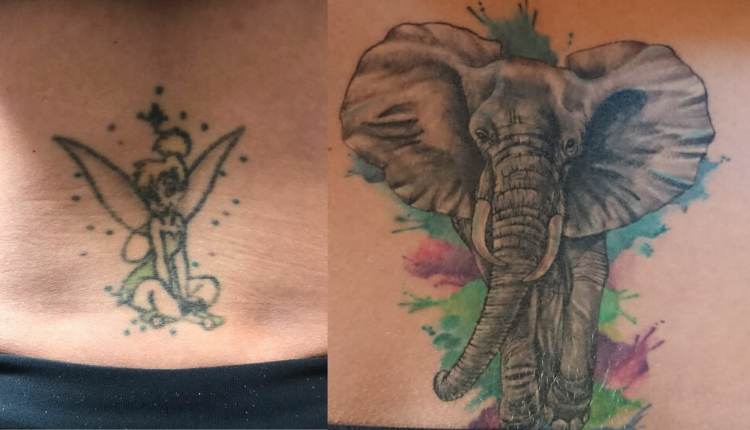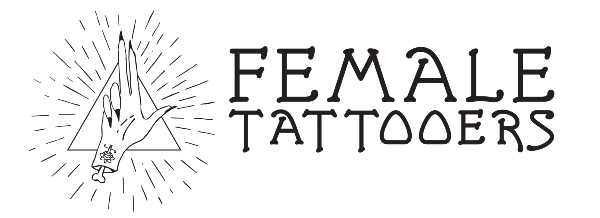Tattoo Cover Ups: Tips and Advice From Artists
Although it’s nice to think that every person who gets tattooed is ready to have that inked design for life, that’s not always the case. Tattoo cover ups happen all the time and an experienced artist can make old or bad art disappear.
If you have an unwanted tattoo and are considering a cover up, patience and compromise is important. Experienced tattoo designers and artists can tell you what is possible for full tattoo coverage.
To dive a little deeper, we asked three tattoo artists for their advice and recommendations for approaching the process and what you can expect when working with a tattoo artist on a cover-up tattoo.
What is a Tattoo Cover Up?
“A cover-up tattoo is a tattoo that covers or disguises another tattoo in the same area, generally because the old tattoo is no longer wanted or poorly executed,” says tattoo artist Erin Belley, who works at the Parkdale location of Boss Tattoos Collective in Calgary. “Cover ups are a great alternative to full tattoo removal, or can be done once a tattoo has been lightened via laser removal.”
What Tattoos are Often Covered Up?

Most cover ups conceal an unwanted tattoo. Poorly done tattoos, old and faded tattoos, or tattoos that no longer hold significance for the person wearing them are often what bring people in for a cover up consultation.
“Most of the tattoos that I cover up seem to be pieces that were spur of the moment,” says Belley.
Some common tattoo cover ups include:
- Name tattoos
- Tribal tattoos
- Script tattoos
- Faded or blown-out tattoos
- Foreign words or symbols
- Old flash
Melissa Wylde, a tattoo artist who works at Garth’s Tattoos in Kent over in the U.K., says that the size of the original tattoo is also sometimes a factor in someone choosing to get a cover up. “Some people have very small tattoos that they had as their first one and decide they want something bigger and better,” she says.
Covering a Tattoo Vs. Reworking a Tattoo
Wylde notes that a cover-up tattoo is different than getting a tattoo reworked or redone. While a rework or extension on an existing tattoo leaves some of the original artwork and fixes, changes, or adds to it, a high-quality cover up completely replaces the original design without leaving a trace.
![old tattoo to cover]()
Tattoo rework and cover up 
By Amanda Graves
How to Choose a Cover-Up Tattoo
When choosing a tattoo to cover an unwanted tattoo, it’s important to decide on the style and subject matter of your new tattoo. Whether you’re interested in realism, blackwork, color illustrative, neo traditional, etc, find an artist who specializes in that style and is comfortable doing cover ups.
Cover-up tattoos generally need to be larger than the size of your original tattoo. “My rule of thumb is that they need to be 2-3 times the size of the original tattoo we are covering,” says Amanda Graves, who works at Spill the Ink Tattoo in Edgewood, Maryland. “A lot of the technique is tricking the eye away from what we are making go away.”
Wylde warns those interested in getting a cover up to be open minded to the size recommendation from your artist. “Always think bigger than what is currently there,” she says.
When choosing a cover-up tattoo, be honest with your artist about what you want, but also be open to compromise. Don’t try to micromanage the design process.
“It’s important for the client to be honest with what they are looking for to the artist, so that the client doesn’t end up with something they don’t love a second or third time,” says Belley. “At the same time, it’s incredibly important to allow the artist the freedom that they need to create a piece that performs well as a cover up.”
Not all tattoos can be covered with the exact idea you have in mind, so trusting your artist is an important part of choosing a cover-up tattoo. “At the end of the day, a good tattoo artist knows what will cover and what won’t,” says Wylde. “Experience is a wonderful thing in this instance.”

Can You Cover a Black Tattoo with Color?
If you are open minded when it comes to the design and style, then most old tattoos—even those done with black ink—can be successfully covered and camouflaged.
For very dark, big black tattoos, your tattoo artist may recommend laser tattoo removal sessions prior to applying color ink to the area.
“I have covered very black tattoos with a lot of open mindedness from the client on the design,” says Graves. “It can be done, but it depends on what you’re looking to cover it with. If the client can afford laser removal to lighten it, that always helps.”
Wylde says that the age of the original tattoo and the quality of a person’s skin also plays a role in whether a black tattoo can be easily covered with strategic color placement. “Whether the ink has faded or has bled out is a big decider whether laser is needed,” she says. “A lasered tattoo is always easier to cover than one that is not.”
Tattoo Laser Removal and Cover Ups
As previously mentioned, deciding to undergo tattoo laser removal opens up a lot of options.
“I recommend laser when a piece is very dark or very large,” says Belley. “Once the tattoo is lightened a bit, it opens up so many more possibilities for the client and artist to create a successful cover-up design.”
Although laser tattoo removal may be unnecessary for smaller pieces or tattoos that have faded substantially on their own, it is often beneficial for people who have tattoo sleeves or big pieces that they no longer like the look of.
“Laser removal can be helpful if someone really wants to start over,” says Graves. “If you have the time, patience, and money you can spend sessions lightening up that old work enough to begin a whole new design.”
Tattoo removal is not a quick process. After a laser removal session, it can take up to eight weeks for skin to regenerate before going in for another removal appointment. Depending on how many sessions are necessary to lighten your tattoo, it may be several months before you’re ready to start the covering process.
Laser removal is also not cheap. According to the American Society for Aesthetic Plastic Surgeons, the average cost of a tattoo removal session is $463. In most cases, says Belley, lightening a tattoo enough to make it work for a cover up doesn’t require too many laser sessions.

How Much Are Cover Up Tattoos?
The cost of a cover-up varies depending on the artist you choose and the size and difficulty of the proposed artwork.
Some artists may charge an hourly rate which can range anywhere from $50 per hour to upwards of $300 per hour or more depending on skill level and experience. Other artists may charge a day rate of approximately $500 to $2,500 per day on average.
Even if the tattoo you’d like to cover up is small and may take under an hour, most shops have a minimum rate for all tattoos and you will be required to pay the shop minimum.
Keep in mind that some artists may charge extra for additional design work or extra consultations relating to cover ups. As with any other tattoo appointment, your tattoo artist or the tattoo shop will likely require a deposit to lock in the dates for your cover-up tattoo appointment.
Pay extra close attention to your artist’s booking policies and ask if they have any requirements necessary to book a cover-up tattoo. Some artists need to see photos of the tattoo you wish to cover or meet with you in person to talk through the options prior to booking an appointment.
Some tattoo artists choose not to do cover-up tattoos or may decline your appointment request because they do not feel comfortable covering the tattoo or they do not want to tattoo your desired style and subject matter.
If this is the case, do not be discouraged. Ask that artist for a recommendation or call tattoo shops in your area to see whether they have artists who specialize in doing cover ups.


